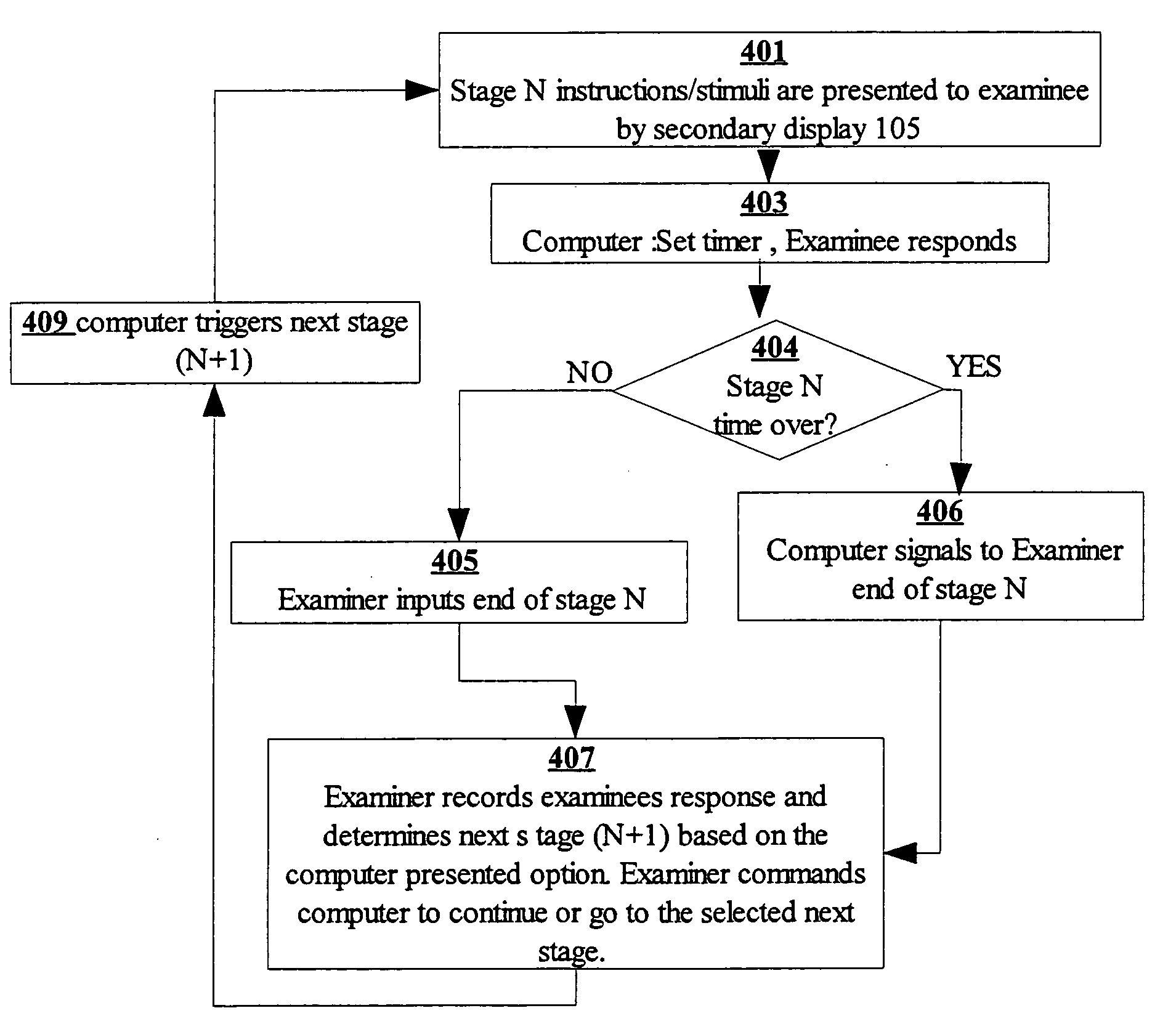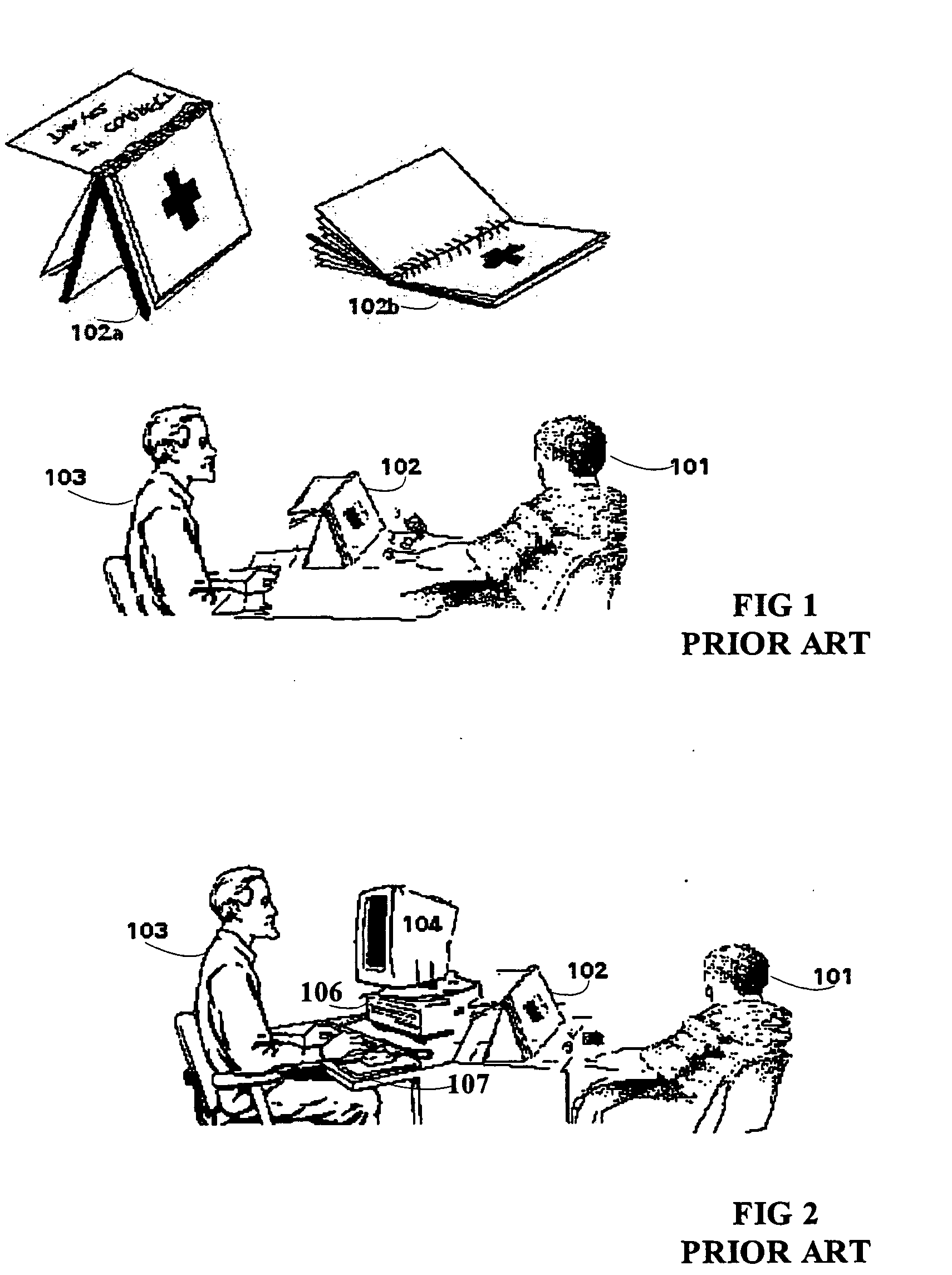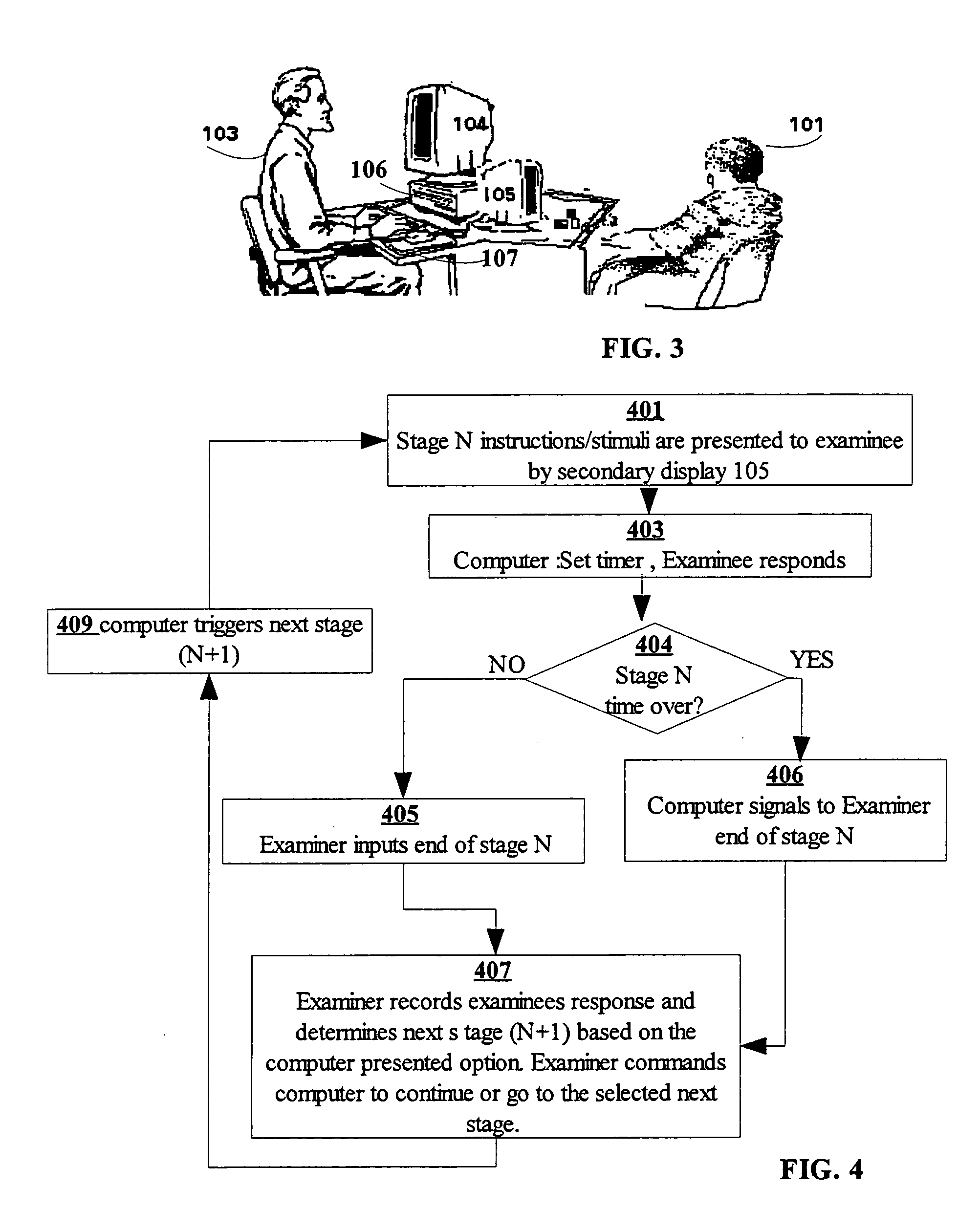Method for improving the presentation of test stimuli during one-on-one clinical psychological tests
a clinical psychological test and stimuli technology, applied in the field of psychometric evaluation and testing, can solve the problems of difficult to locate, affect the reliability of the test, and not always present the stimuli in a standardized manner to the examin
- Summary
- Abstract
- Description
- Claims
- Application Information
AI Technical Summary
Benefits of technology
Problems solved by technology
Method used
Image
Examples
Embodiment Construction
[0034] The present invention relates to the field of psychological evaluations and testing and more specifically to a method which improves the administering of “one-on-one”, ecologically valid, clinical psychological tests by storing multiple sets of visual stimuli in a computer that is operated and controlled by an examiner so that the examiner can select desired stimuli from the sets and present them in a desired order, rate and format on a secondary display that is viewed by the examinee. At each stage of the test, a stimulus and / or an instruction may be presented to the examinee on the secondary display and at simultaneously shown to the examiner on the primary display without interfering with the display of other applications running on the computer being used for instance to record and score the response of the examinee and for managing the administration of the test. Alternatively, text or graphics related to the stimulus / instruction is presented simultaneously to the examin...
PUM
 Login to View More
Login to View More Abstract
Description
Claims
Application Information
 Login to View More
Login to View More - R&D
- Intellectual Property
- Life Sciences
- Materials
- Tech Scout
- Unparalleled Data Quality
- Higher Quality Content
- 60% Fewer Hallucinations
Browse by: Latest US Patents, China's latest patents, Technical Efficacy Thesaurus, Application Domain, Technology Topic, Popular Technical Reports.
© 2025 PatSnap. All rights reserved.Legal|Privacy policy|Modern Slavery Act Transparency Statement|Sitemap|About US| Contact US: help@patsnap.com



